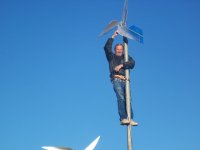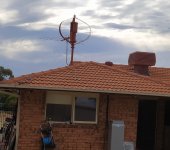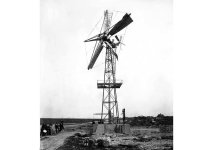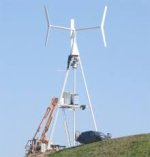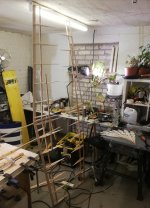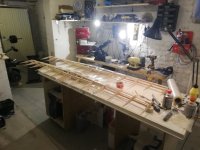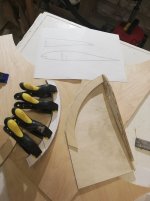I recall finding a lot of useful info on DIY wind-gens at otherpower.com, and their chat-forum fieldlines.com
The way I remember it, it is useful to buy/rent a data-logging "weather station" that will log wind-speed, direction, and frequency.
Build a tall pole, and attach the weather station at 50 ft, then 60 ft, then 70 ft. This will tell you the lowest height that you can harvest useful amounts of wind. Robust towers are expensive, and the extra height costs are a significant factor. Mount the wind-gen 10-ft too low, and any money you saved on a shorter tower will be wasted on a system that generates very low watts.
Your cabin may be on the side of a hill, or by a stream (for fresh water and maybe a micro-hydro), but the wind-gen tower may be a better producer if it's located at the top of the hill. If yes, then there may be a benefit to generating AC with six wires (three phases) all the way down to the cabin, and put the rectifyer (AC to DC) which converts the six wires to two DC wires, next to the battery.
Also, buiditsolar.com has a DIY wind-generator section
https://www.builditsolar.com/Projects/Wind/wind.htm
The way I remember it, it is useful to buy/rent a data-logging "weather station" that will log wind-speed, direction, and frequency.
Build a tall pole, and attach the weather station at 50 ft, then 60 ft, then 70 ft. This will tell you the lowest height that you can harvest useful amounts of wind. Robust towers are expensive, and the extra height costs are a significant factor. Mount the wind-gen 10-ft too low, and any money you saved on a shorter tower will be wasted on a system that generates very low watts.
Your cabin may be on the side of a hill, or by a stream (for fresh water and maybe a micro-hydro), but the wind-gen tower may be a better producer if it's located at the top of the hill. If yes, then there may be a benefit to generating AC with six wires (three phases) all the way down to the cabin, and put the rectifyer (AC to DC) which converts the six wires to two DC wires, next to the battery.
Also, buiditsolar.com has a DIY wind-generator section
https://www.builditsolar.com/Projects/Wind/wind.htm


